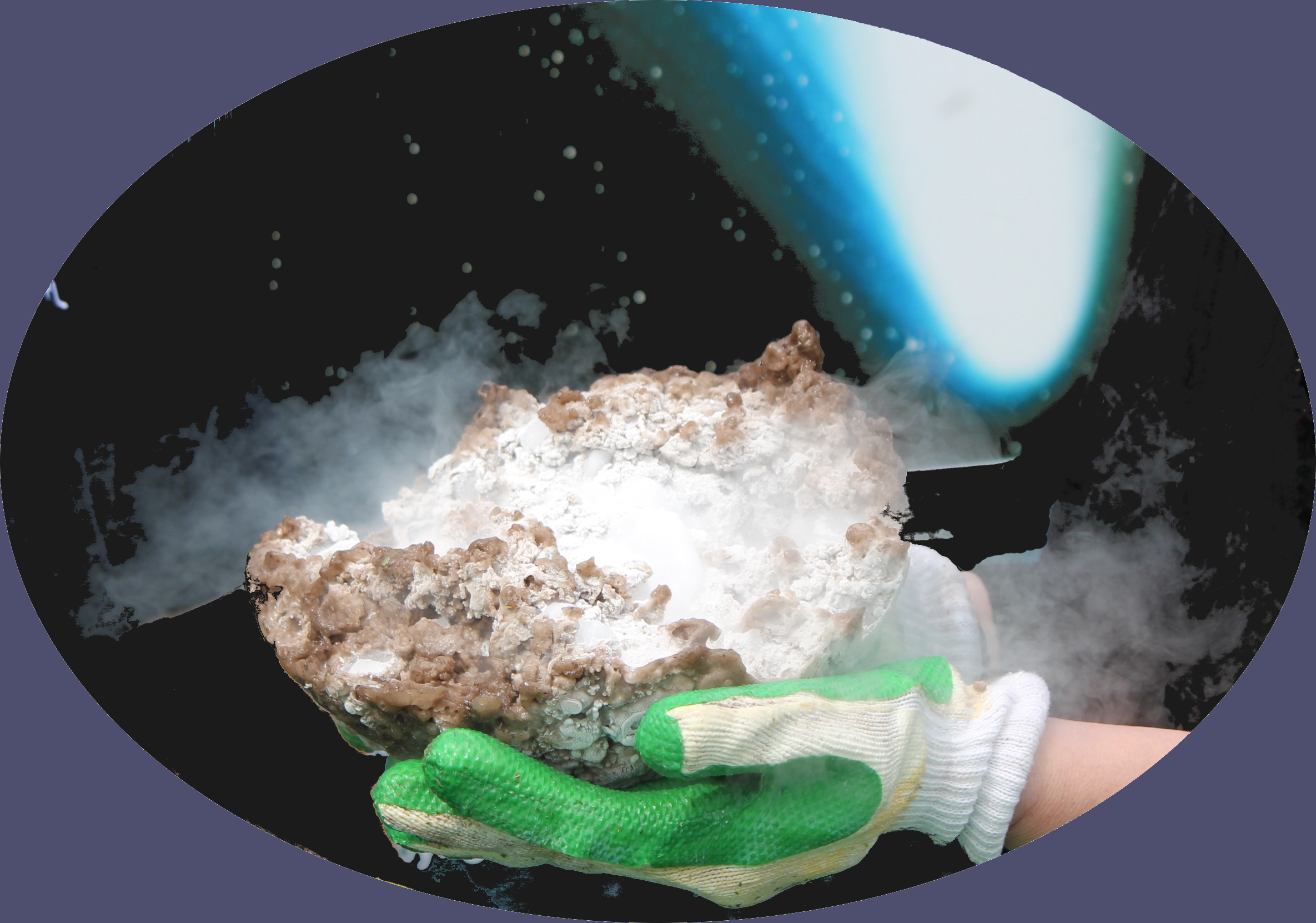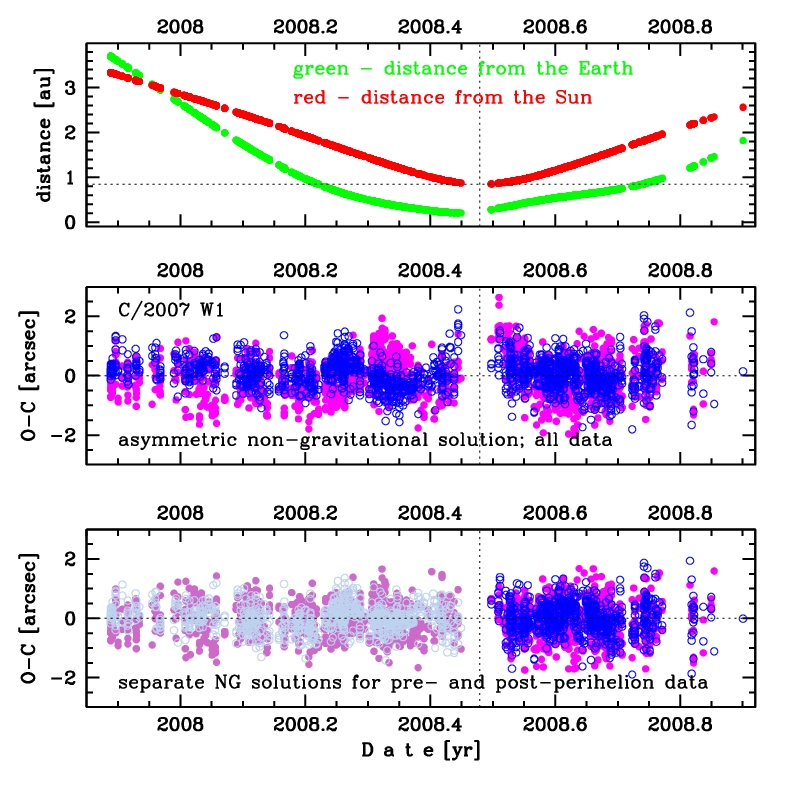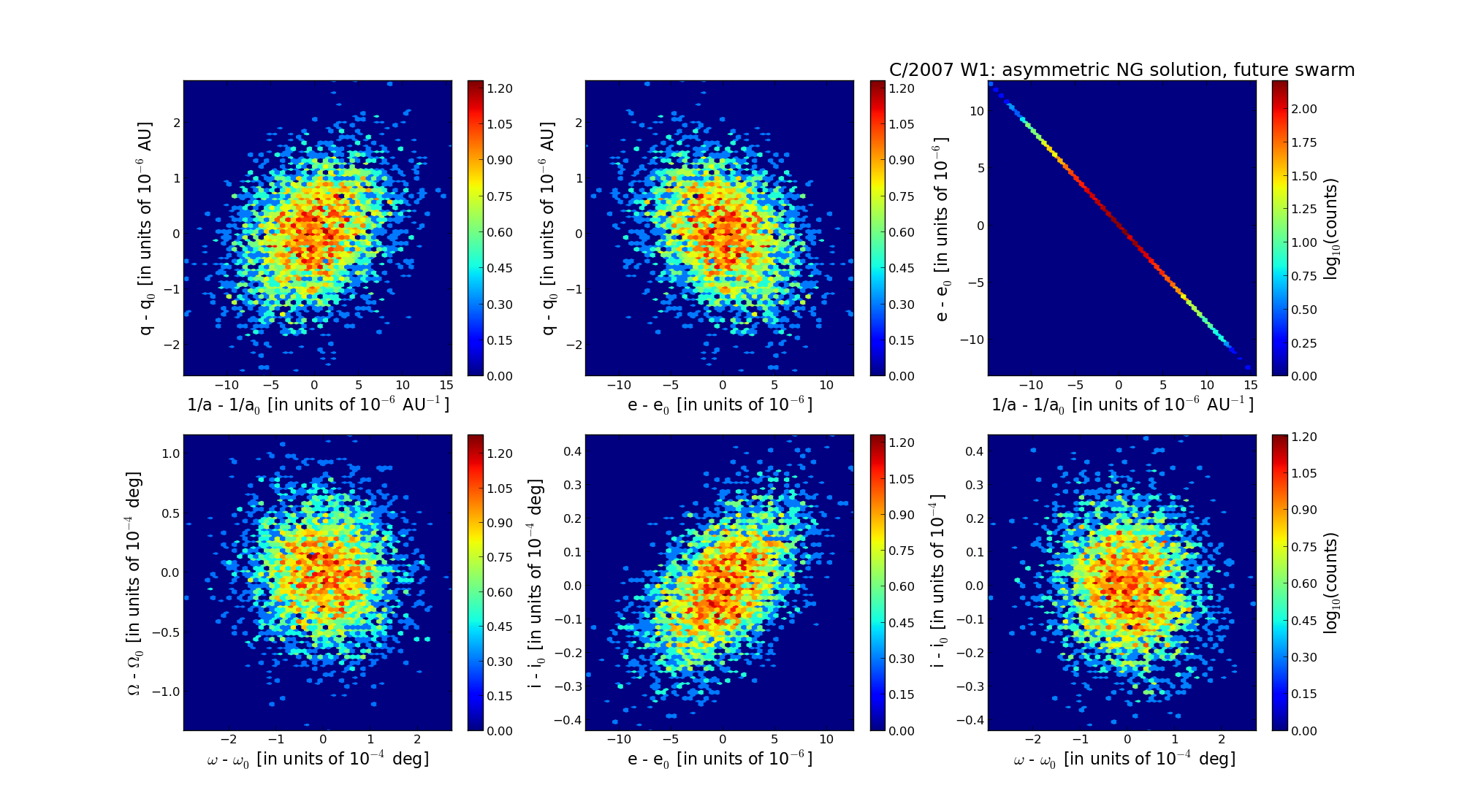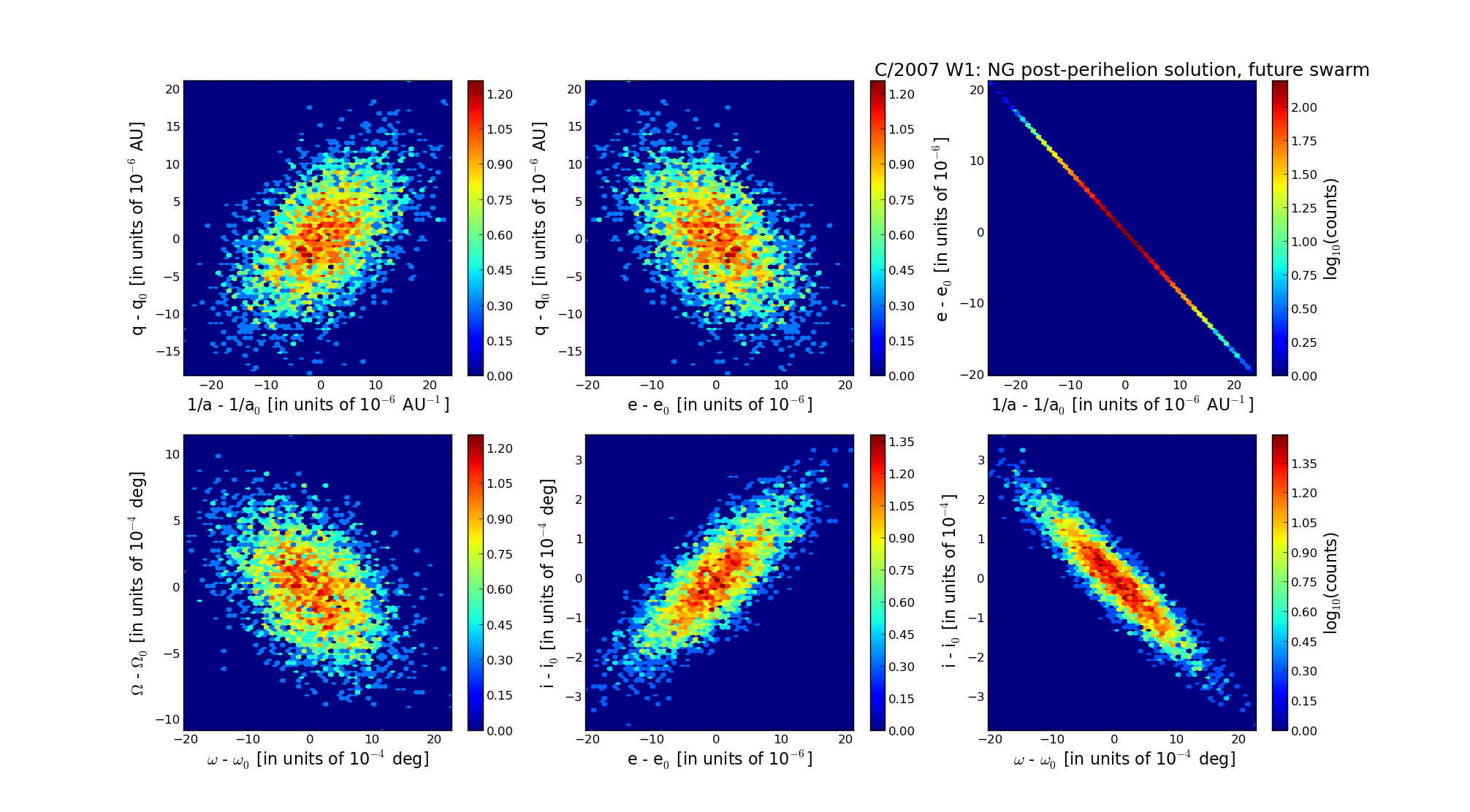| Solar System Dynamics & Planetology Group |
 |
C/2007 W1 Boattini |  |
| Solar System Dynamics & Planetology Group |
 |
C/2007 W1 Boattini |  |

| number of observations | 1703 |
| number of residuals | 3293 |
| data interval | 2007 Nov. 20 — 2008 Dec. 17 |
| rms [arcsec] | 0.60 |
| orbit quality class | 1a |
| Epoch (TT) | 20080623.0 | = JD 2454640.5 |
| time of perihelion passage (TT) | 20080624.885133 | ± 0.000007 |
| perihelion distance | 0.84967565 | ± 0.00000012 |
| eccentricity | 1.00010098 | ± 0.00000132 |
| argument of perihelion[deg] | 306.550830 | ± 0.000026 |
| longitude of the ascending node [deg] | 334.523804 | ± 0.000030 |
| inclination[deg] | 9.889166 | ± 0.000010 |
| inverse semimajor axis [10-6 au-1] | -118.84 | ± 1.56 |
| Nongravitational parameters [10-8 au/day2] | A1 = 3.97480 ± 0.00841 | A2 = -0.4266 ± 0.0138 | A3 = -0.06387 ± 0.00276 | time shift of g(r) relative to perihelion [day] | 24.7 ± 4.3 |
| Epoch (TT) | 17101203.0 | |
| time of perihelion passage (TT) | 2008625.604804 | ± 0.000034 |
| perihelion distance | 0.85571663 | ± 0.00000021 |
| eccentricity | 1.00002492 | ± 0.00000111 |
| argument of perihelion[deg] | 306.193581 | ± 0.000036 |
| longitude of the ascending node [deg] | 334.735622 | ± 0.000036 |
| inclination[deg] | 9.764012 | ± 0.000012 |
| inverse semimajor axis [10-6 au-1] | -29.12 | ± 1.30 |

| Epoch (TT) | 23120302.0 | |
| time of perihelion passage (TT) | 20080624.796026 | ± 0.000144 |
| perihelion distance | 0.84646901 | ± 0.00000073 |
| eccentricity | 0.99957598 | ± 0.00000363 |
| argument of perihelion[deg] | 306.418859 | ± 0.000075 |
| longitude of the ascending node [deg] | 334.559057 | ± 0.000031 |
| inclination[deg] | 9.892780 | ± 0.000013 |
| inverse semimajor axis [10-6 au-1] | 500.93 | ± 4.28 |
| number of observations | 926 |
| number of residuals | 1771 |
| data interval | 2007 Nov. 20 — 2008 June 12 (pre-perihelion data) |
| rms [arcsec] | 0.49 |
| orbit quality class | 1b |
| Epoch (TT) | 20080623.0 | = JD 2454640.5 |
| time of perihelion passage (TT) | 20080624.887029 | ± 0.000159 |
| perihelion distance | 0.84965694 | ± 0.00000169 |
| eccentricity | 1.00011020 | ± 0.00000309 |
| argument of perihelion[deg] | 306.549632 | ± 0.000384 |
| longitude of the ascending node [deg] | 334.528730 | ± 0.000683 |
| inclination[deg] | 9.889591 | ± 0.000041 |
| inverse semimajor axis [10-6 au-1] | -129.70 | ± 3.64 |
| Nongravitational parameters [10-8 au/day2] | A1 = 1.002 ± 0.139 | A2 = -0.7253 ± 0.0321 | A3 = -0.4916 ± 0.0703 |
| Epoch (TT) | 17110112.0 | |
| time of perihelion passage (TT) | 20080625.604947 | ± 0.000155 |
| perihelion distance | 0.85572750 | ± 0.00000091 |
| eccentricity | 1.00003655 | ± 0.00000200 |
| argument of perihelion[deg] | 306.192555 | ± 0.000064 |
| longitude of the ascending node [deg] | 334.735976 | ± 0.000045 |
| inclination[deg] | 9.764146 | ± 0.000017 |
| inverse semimajor axis [10-6 au-1] | -42.71 | ± 2.34 |
| number of observations | 777 |
| number of residuals | 1522 |
| data interval | 2008 June 30 — 2008 Dec. 17 |
| rms [arcsec] | 0.59 |
| orbit quality class | 2a |
| Epoch (TT) | 20080623.0 | = JD 2454640.5 |
| time of perihelion passage (TT) | 20080624.887438 | ± 0.000639 |
| perihelion distance | 0.84968619 | ± 0.00000646 |
| eccentricity | 1.00010121 | ± 0.00002732 |
| argument of perihelion[deg] | 306.554562 | ± 0.000676 |
| longitude of the ascending node [deg] | 334.523444 | ± 0.000279 |
| inclination[deg] | 9.888552 | ± 0.000515 |
| inverse semimajor axis [10-6 au-1] | -119.11 | ± 32.15 |
| Nongravitational parameters [10-8 au/day2] | A1 = 5.864 ± 0.272 | A2 = -0.783 ± 0.172 | A3 = 0.136 ± 0.250 |

| Epoch (TT) | 23121028.0 | |
| time of perihelion passage (TT) | 20080624.794149 | ± 0.000770 |
| perihelion distance | 0.84649114 | ± 0.00000555 |
| eccentricity | 0.99953072 | ± 0.00000601 |
| argument of perihelion[deg] | 306.419508 | ± 0.000615 |
| longitude of the ascending node [deg] | 334.558876 | ± 0.000296 |
| inclination[deg] | 9.892613 | ± 0.000099 |
| inverse semimajor axis [10-6 au-1] | 554.38 | ± 7.09 |